Topiary: a practical guide to this must-have garden trend
Add structure and character to your garden with topiary and ensures it looks great all year. We share the best plants, techniques and tools you'll need
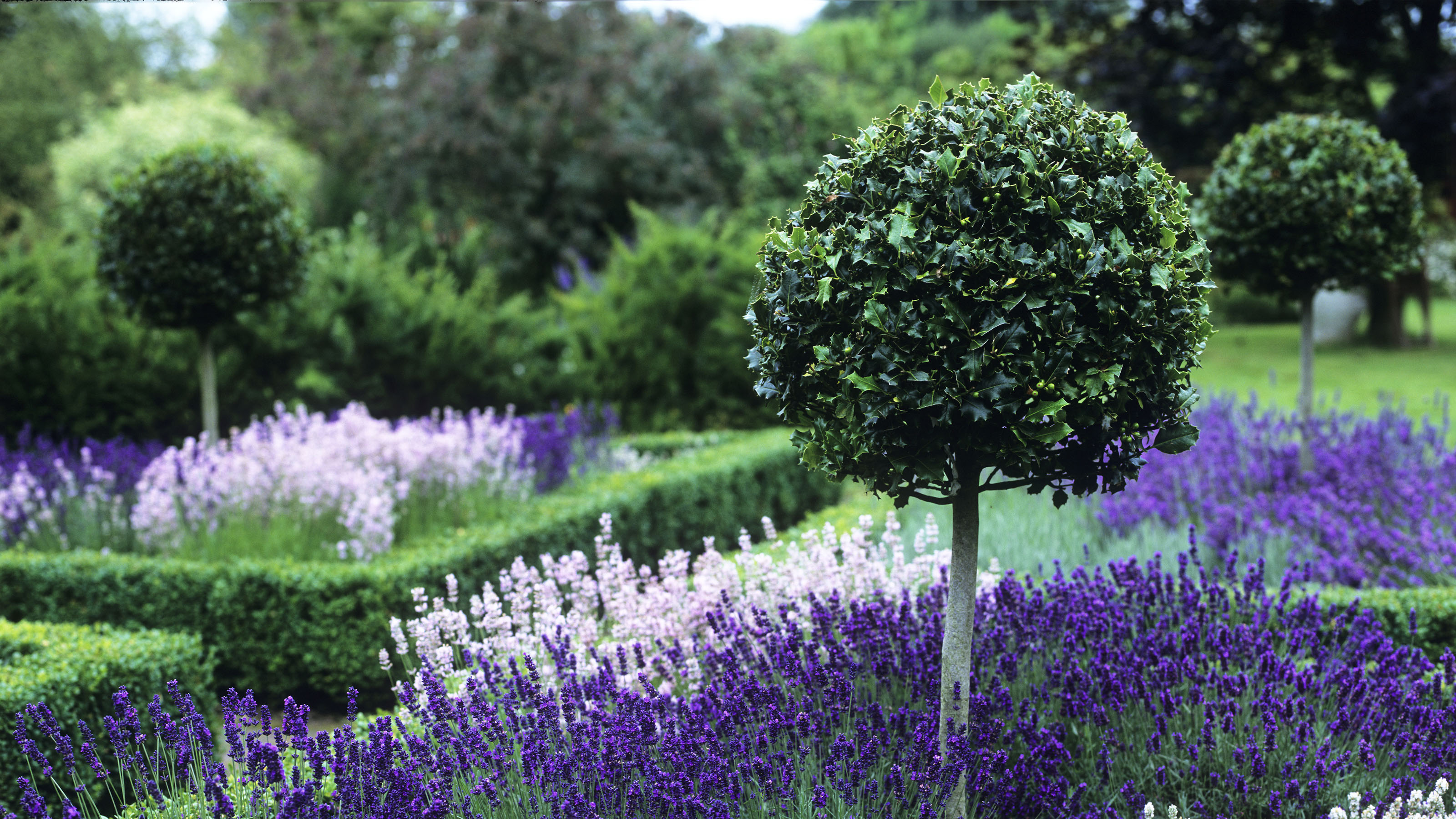

Topiary is the ancient practice of shearing evergreen shrubs and trees to bring unique shapes and structure to a garden. It includes everything from miniature box balls in pots on your patio to elaborate parterres that enclose flowerbeds. But most famously, it is the individual plants that are tightly clipped to form peacocks, pyramids, chess pieces, and other fantastical or geometric shapes.
'Clipped trees introduced singly, in pairs or in groups, provide a certain atmosphere in a garden,' wrote Nathaniel Lloyd, who created the impressive topiary at Great Dixter in East Sussex in the UK. This ‘atmosphere’ relates to character, but also to structure. For those of us who like bright blooms to take center stage in our gardens, thinking about structure might sound a bit dull. But the garden needs a frame for the billowing beauty and color of its perennials and flowers, and topiary is one of the most effective and enjoyable ways to achieve it.
Topiary is one of the most wonderful garden decor ideas too. By clipping evergreens into hedging, archways, or single pieces that draw the eye and create focal points, we’re slowly building a living green architecture that shows off the flowers when they’re at their peak in summer. It will also ensure the garden looks spectacular in the depths of winter too, when the lines and shapes of topiary come into their own as the rest of the garden dies back.
Reasons why you should consider topiary in your garden
'I love topiary because it looks good for 10 months of the year,' says Charlotte Molesworth, creator and owner of the beautiful Balmoral Cottage topiary garden in Kent, England. 'It acts as a backbone to all other planting. And if you use yew or box, it only needs cutting once a year.'
It's easy to think topiary is too ambitious to be included in small garden ideas or that great skill is required to create it. And while it is true that practice is needed for the more intricate pieces, like any skill, the more you practise it the better you become.
Topiary works well with many styles, from bohemian gardens, traditional cottage gardens and even Mediterranean gardens.
What is the history of topiary?
The Romans clipped evergreens (such as myrtle) into geometric and animal shapes, or cut them to resemble mini versions of huge trees seen in the wild, in order to create a microcosm landscape (the word topiary comes from the Greek topion, meaning landscape). In Tudor England, flamboyant and geometric topiary was all the rage; it fell out of fashion in the 18th century, before having a revival in the Edwardian era, when most gardens had topiary pieces, such as teapots or peacocks.

What sort of plants are used for topiary?
The traditional choices are yew for large pieces and other tall low maintenance hedge plants, and box for small pieces and low hedging. Both have dense foliage that allows complex shapes to be clipped with ease.
Charlotte Molesworth's garden is dominated by both: 'The box contains garden areas so well, and its color contrasts beautifully with the darkness of the yew, especially in spring when its new growth is bright lime green.'
As long as it’s kept moist until established, yew is an easy plant. It grows fast in its early years, then slows and can live for hundreds of years. Box, on the other hand, isn’t so stress-free because it’s prone to a fungal disease called blight, which creates bare, brown patches.
However, there are lots of alternatives to box; indeed, all evergreens that are tonsile (respond well to clipping) can be used for topiary. Privet, Phillyrea latifolia, holm oak, and holly are great for simple shapes. For low hedging, small-leaved plants (such as Euonymus japonicus ‘Microphyllus’) are excellent.
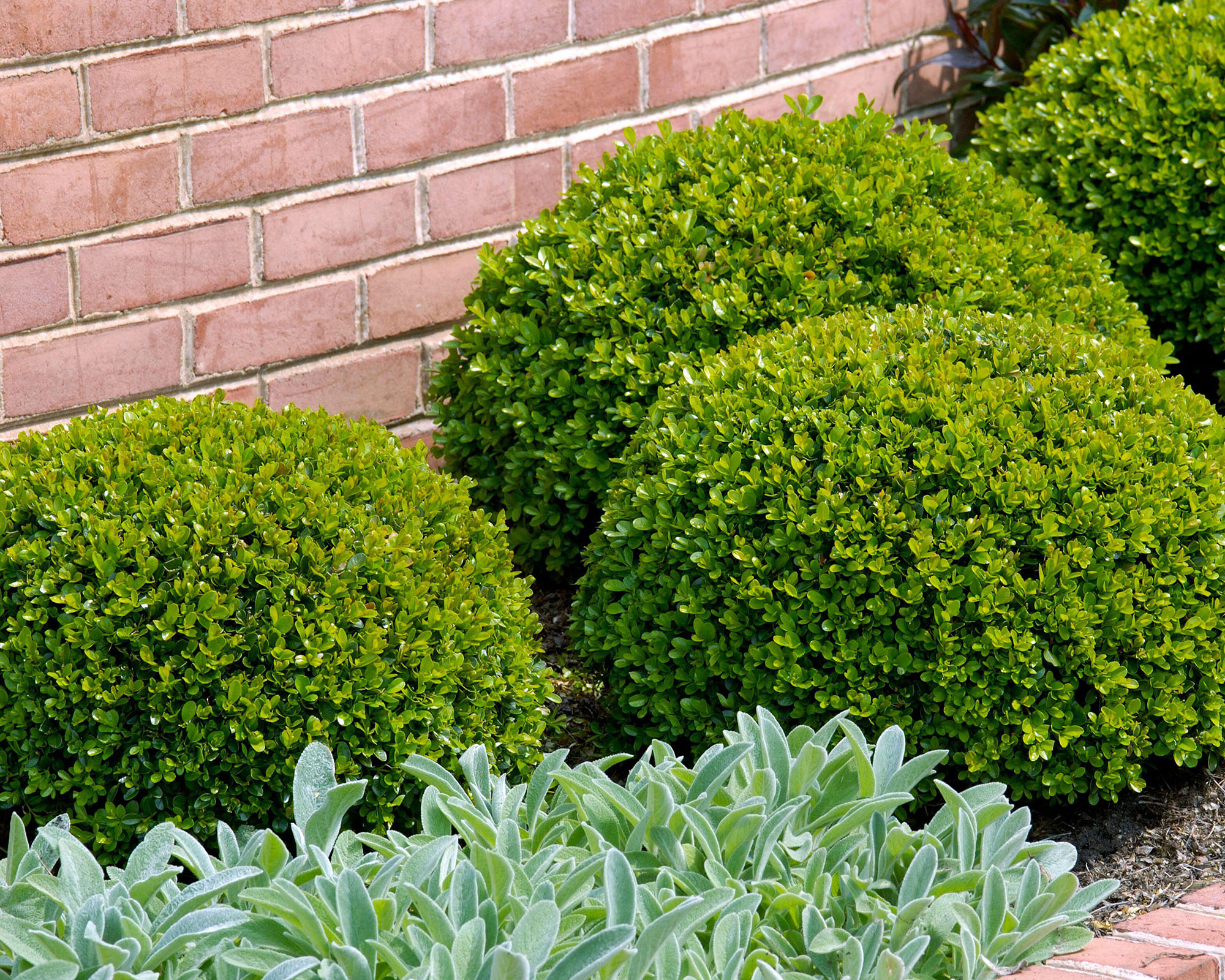
Which topiary style will fit into my garden?
Straight-edged geometric shapes suit more formal design. Whereas fun, eccentric shapes, such as birds, work well in more traditional-style cottage gardens. Curvaceous hedging blends nicely with contemporary prairie design.
Then there are cloud-pruned trees which will shine in Japanese garden ideas. And clipped rocket juniper or cypress are beautiful in Mediterranean-style borders.

What tools do you need for topiary?
For basic, compact shapes, the best secateurs and shears will suffice. But if you’re going to create a lot of topiary, including intricate pieces, it’s worth investing in a decent pair of one-handed topiary clippers from Amazon, which allow a lot more accuracy.
If you don’t want to clip freestyle, purchase metal frames (available in a range of shapes) to clip around. Large topiary will require a step-ladder and the best hedge trimmer too. And if you’re going for super straight lines you'll need a spirit level.
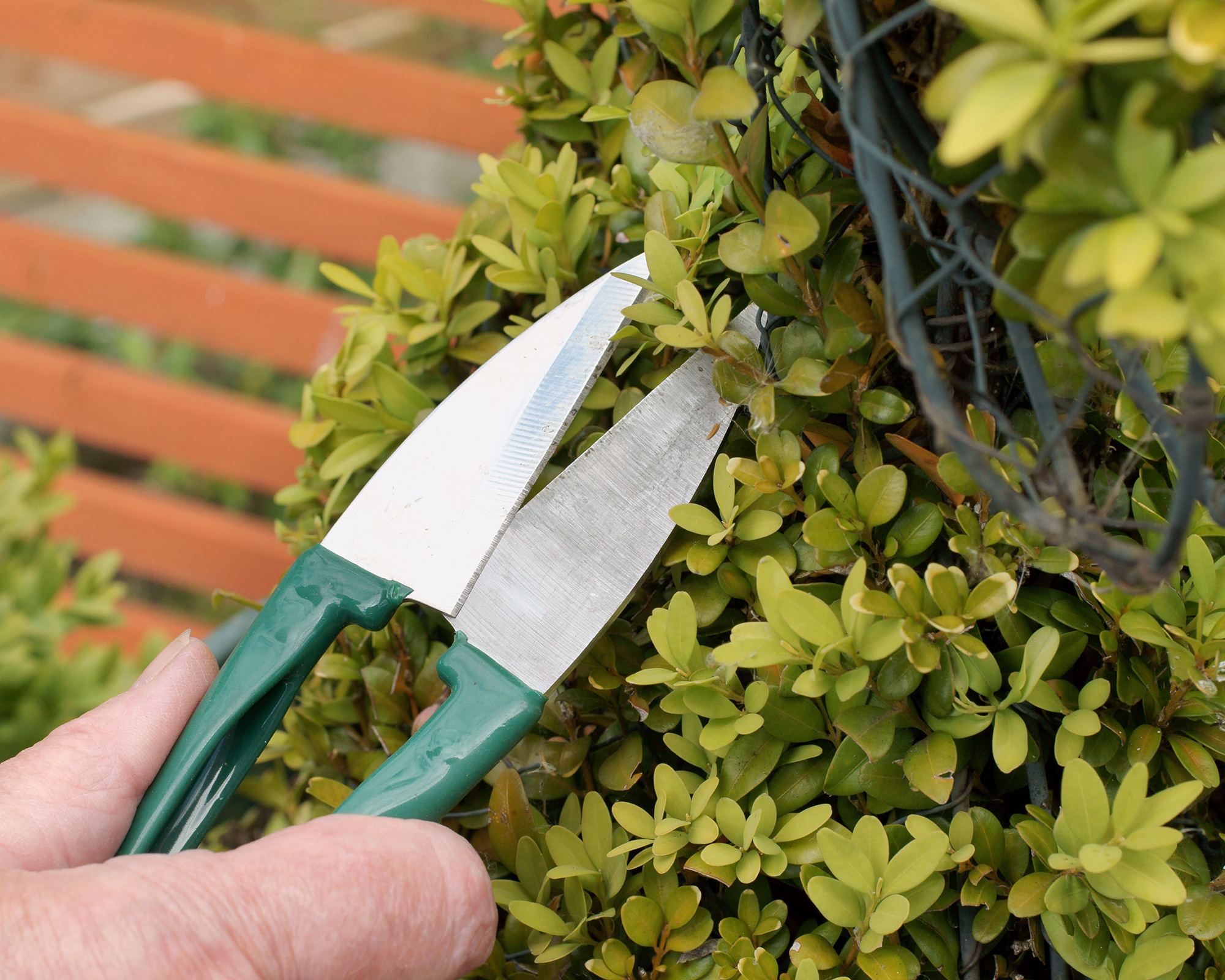
What are the best topiary shapes for beginners?
'Complete beginners could start with a ball or cone shape to get the hang of using shears,' says Charlotte. 'After that, step up the game and begin a two-tiered-ball topiary or a bird.'
You could also buy a plant which has already been shaped into a cone or ball and maintain it with regular pruning, for example like this pair of box pyramids from You Garden.
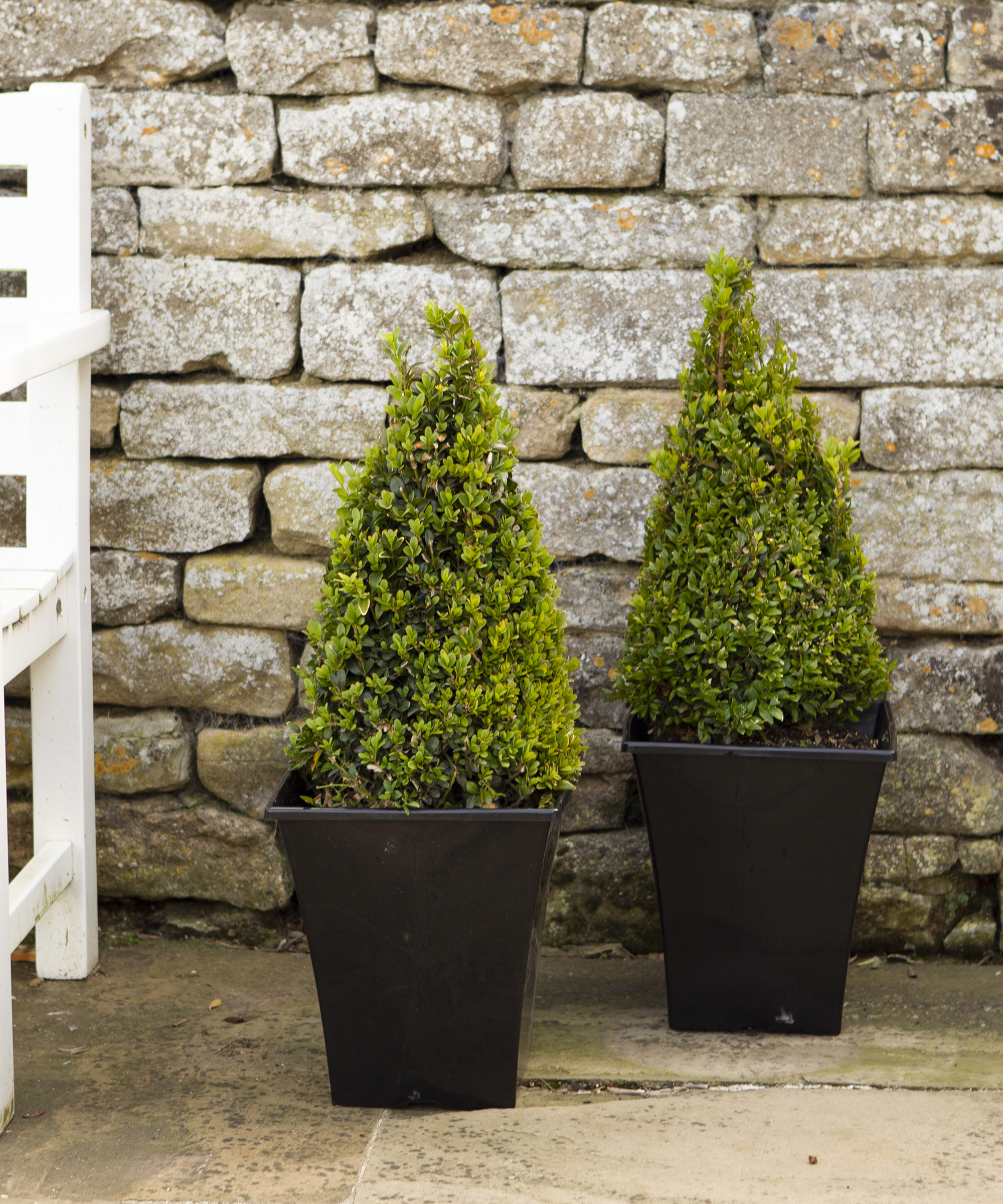
How do you create topiary?
Ready to start trying some simple topiary shapes in your own garden? Follow these step-by-step projects for some creative additions to your plot.
1. Create a spiral topiary shape
- Take a cone-shaped evergreen (such as box or cypress).
- Tie white string to the top and then wrap it around the plant, so that it creates a helter-skelter look. A 3ft (90cm) cone might have 6 or 7 rounds cut into it.
- Using one-handed topiary clippers or sharp kitchen scissors, begin to snip into the plant, gradually creating a gutter behind and around the string.
- Once you’ve created the basic skeleton shape, remove the string and clip until you have a series of neat, curvaceous whorls.

2. Create a peacock topiary shape
- Take a bushy evergreen shrub (such as yew or box) that’s at least 5ft (1.5m) tall.
- Create a base or plinth for your bird to sit upon, by clipping a dome shape into the lower two-thirds of the plant with garden shears.
- Study the upper part of the plant and decide which dominant stems will create the head and tail.
- Tie the 2-3 front stems (that will form the head) together with string and lightly cut into shape.
- Bind the 5-10 stems that will form the tail, using string and a cane to create a vague fan shape.
- Cut back the rest of the upper section to create a body that is lower than the head and the tail.

How do you care for topiary?
It's important to keep trimming topiary regularly. 'Topiary needs cutting,' says Charlotte. 'If you leave box, it will grow into a tree!' Cutting time varies from plant to plant, but in general cut in early or late summer, or both. If birds are nesting in the plant, wait until August.
Try and stay patient advises Charlotte. 'A decent box hedge can take 10 years to form. If you don’t have that kind of patience, grow Wilson’s honeysuckle.'
Keep your topiary in a sheltered spot. If you're keeping your topiary in a pot as a container gardening idea then containerized topiary is best sheltered against a south or west-facing wall in winter, and it must have good drainage to prevent rotting. Give it a liquid fertilizer in spring and mulch the base.
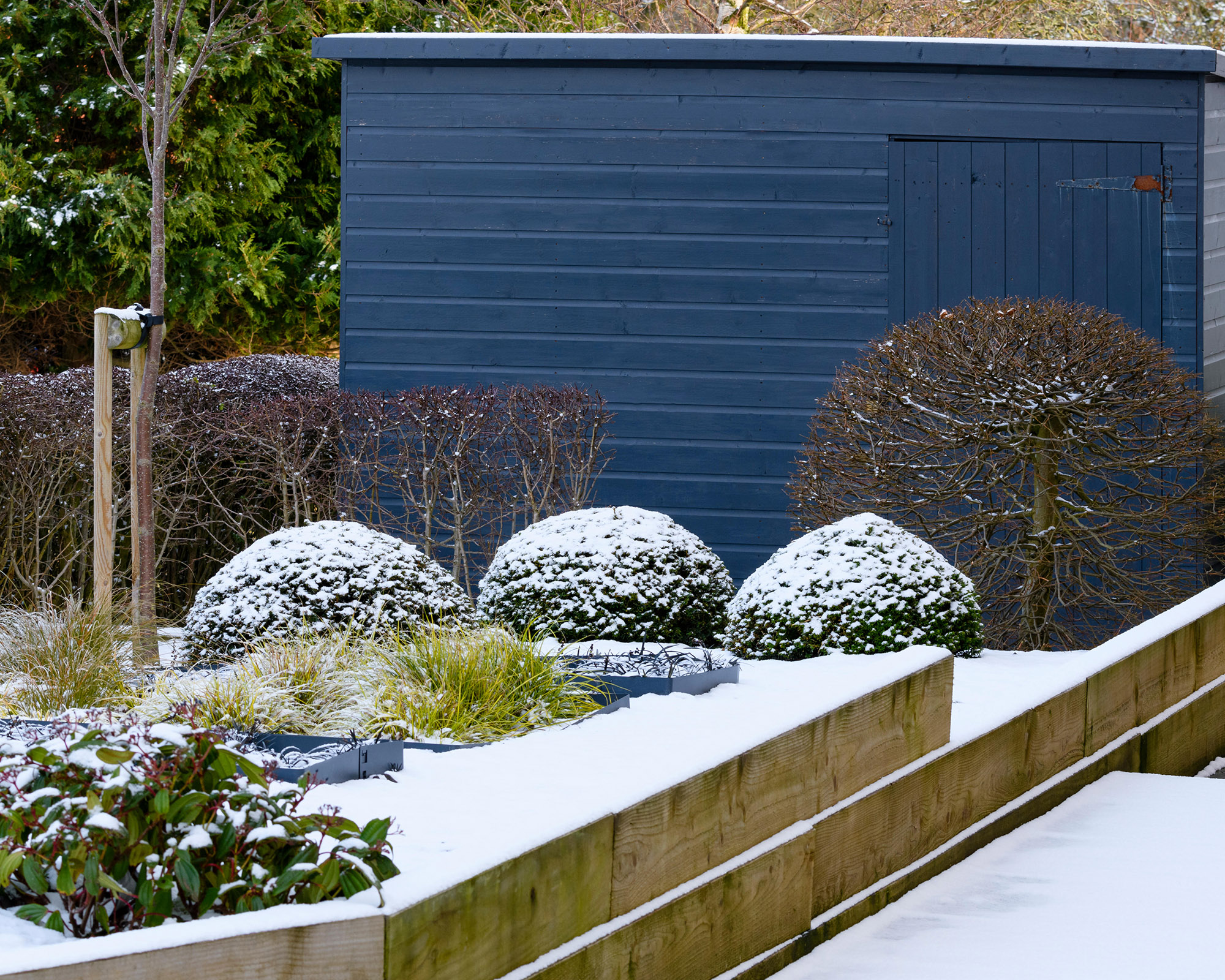
What are the best plants for topiary?
- Box (Buxus sempervirens)
An aromatic evergreen shrub with small leaves, for topiary that doesn’t exceed 6ft (1.8m). Also great for mini hedges and small or intricate pieces. Grow it in well-drained soil in sheltered semi-shade. Clip it back in August and trim it in June as well, unless there are birds nesting in it. - Yew (Taxus baccata)
A bushy evergreen tree with dark-green or gold leaves and toxic red berries. Good for large, impactful or detailed topiary. Grow it in well-drained soil, and keep the soil moist until your plants establish. If birds are nesting in it, only clip it in August. Otherwise, clip it back in June and September. - Holly (Ilex aquifolium)
An evergreen with green, gold, or variegated leaves and red berries. Not only is it one of the best plants with winter berries, it's also often used for hedging, large topiary, or lollipop shapes. Small-leaved Ilex crenata is often used as an alternative to box. Grow it in well-drained soil in sun or semi-shade. Prune it back in March and, if necessary, again in August. - Laurel (Prunus lusitanica)
Portugal laurel is a hardy, spreading evergreen. It's ideal for creating dome-headed shapes. Use bay laurel (Laurus nobilis) for lollipop shapes in mild areas. It likes well-drained soil and grows best in sun or semi-shade. Cut it back in April, but if birds are nesting, wait until August. - Osmanthus (O. delavayi and x O. burkwoodii)
Slow-growing evergreen shrubs with deep-green leaves and fragrant white spring flowers. It's used for large domes or hedging. It likes well-drained soil and to be planted in sun or semi-shade. Clip it after flowering, and if necessary, again in August. - Wilson’s honeysuckle (Lonicera ligustrina var. yunnanensis; syn. L. nitida)
A dense evergreen shrub with small green or gold leaves. This is the option that is good for anyone impatient, as it grows very quickly. Grow it in well-drained soil in sun or semi-shade. It requires clipping several times a year.

How can I prevent box blight in topiary?
- Use a variety that has some disease resistance, such as ‘Faulkner’.
- Confine new plants for a month after purchase to ensure they don’t develop disease, or create new plants from your own cuttings instead. You can find out how to take cuttings from plants in our guide.
- Only trim once a year, so that plants don’t become too dense, which restricts air flow.
- Prune a convex (rather than flat) top to improve air flow and reduce moisture.
- Control moisture by trimming in dry weather, watering from below, and mulching the base.
- Disinfect your shears before clipping the next hedge or topiary piece.
- Use a box alternative, such as Ilex crenata (which forms the low hedging at Levens Hall), Euonymus japonicus ‘Microphyllus’, or Lonicera ligustrina var. yunnanensis ‘Maigrün'.


Teresa has worked as an Editor on a number of gardening magazines for three years now. So she is lucky enough to see and write about gardening across all sizes, budgets and abilities. She recently moved into her first home and the garden is a real project! Currently she is relishing planning her own design and planting schemes. What she is most passionate about when it comes to gardening are the positive effects it has on our mental health to grow and care for plants, as well as being great for the environment too and help provide food and shelter for wildlife.
